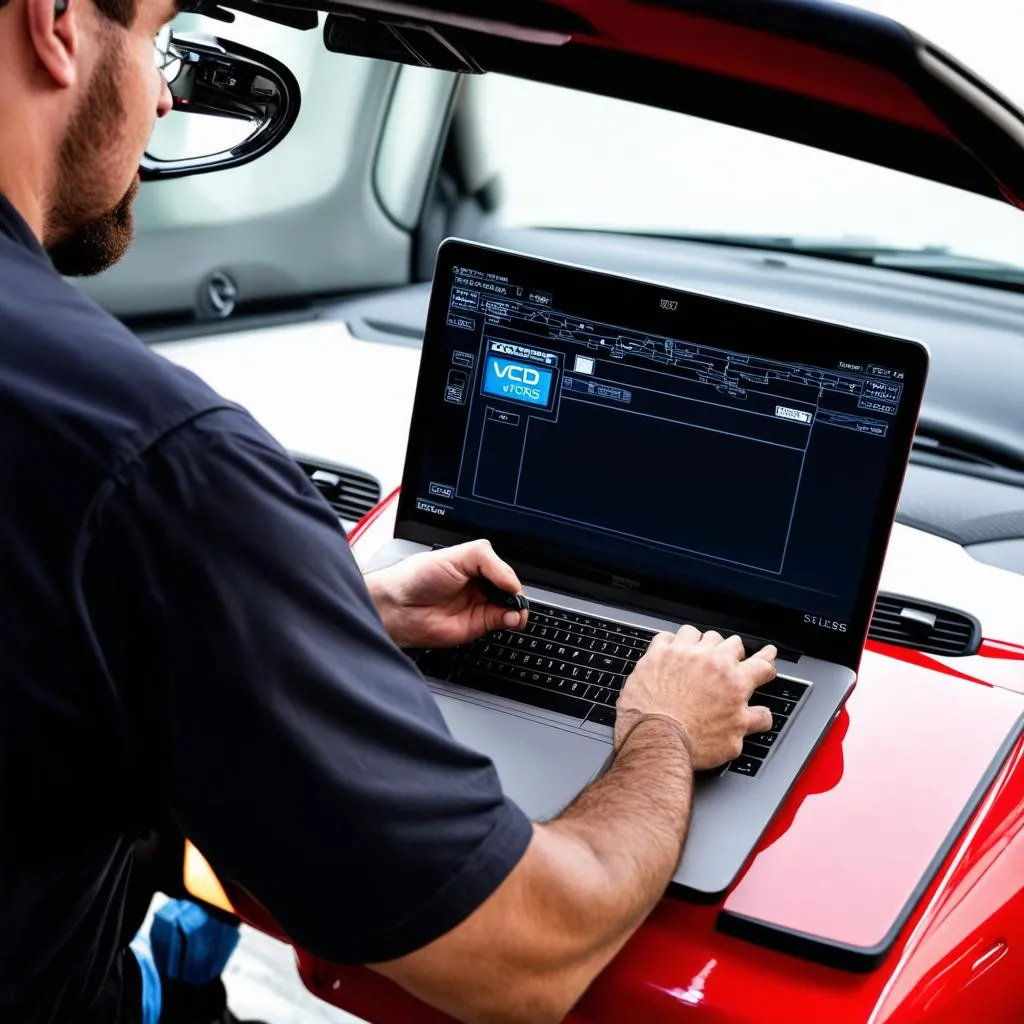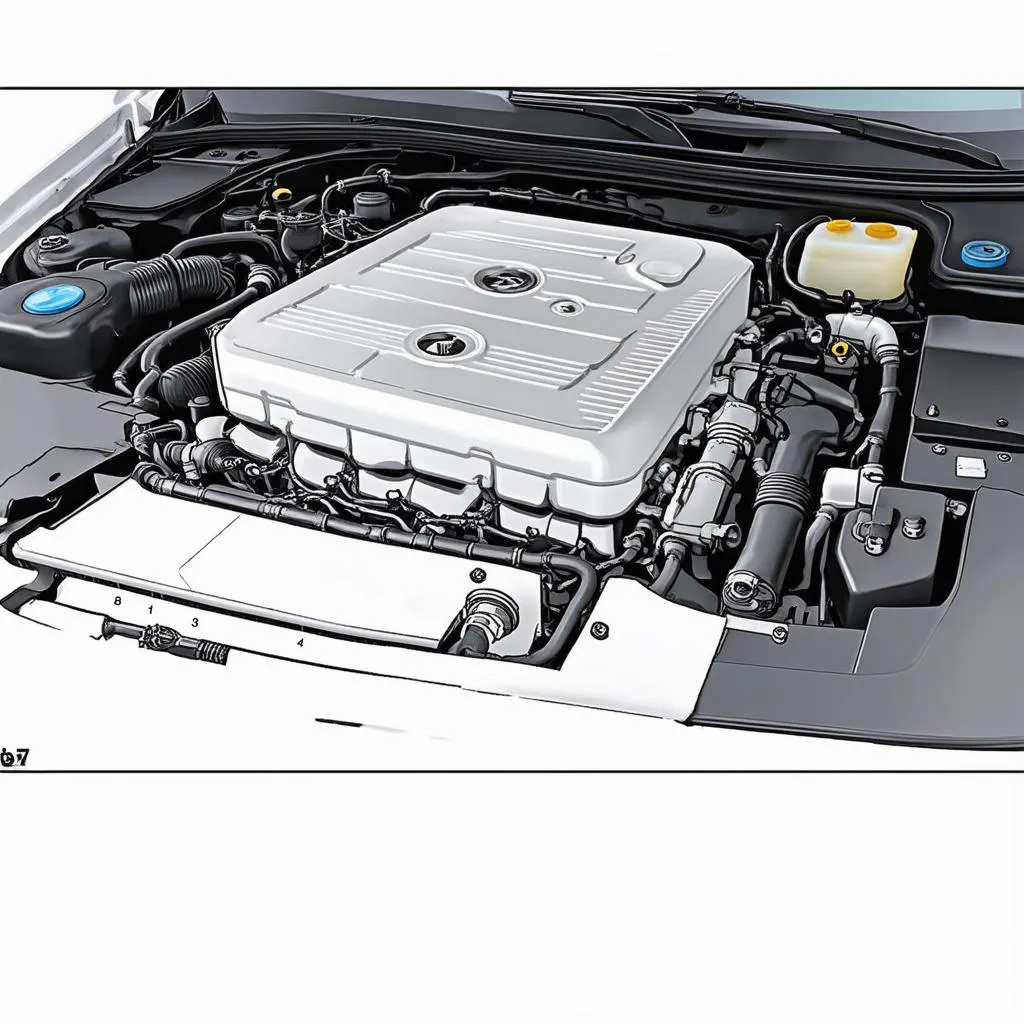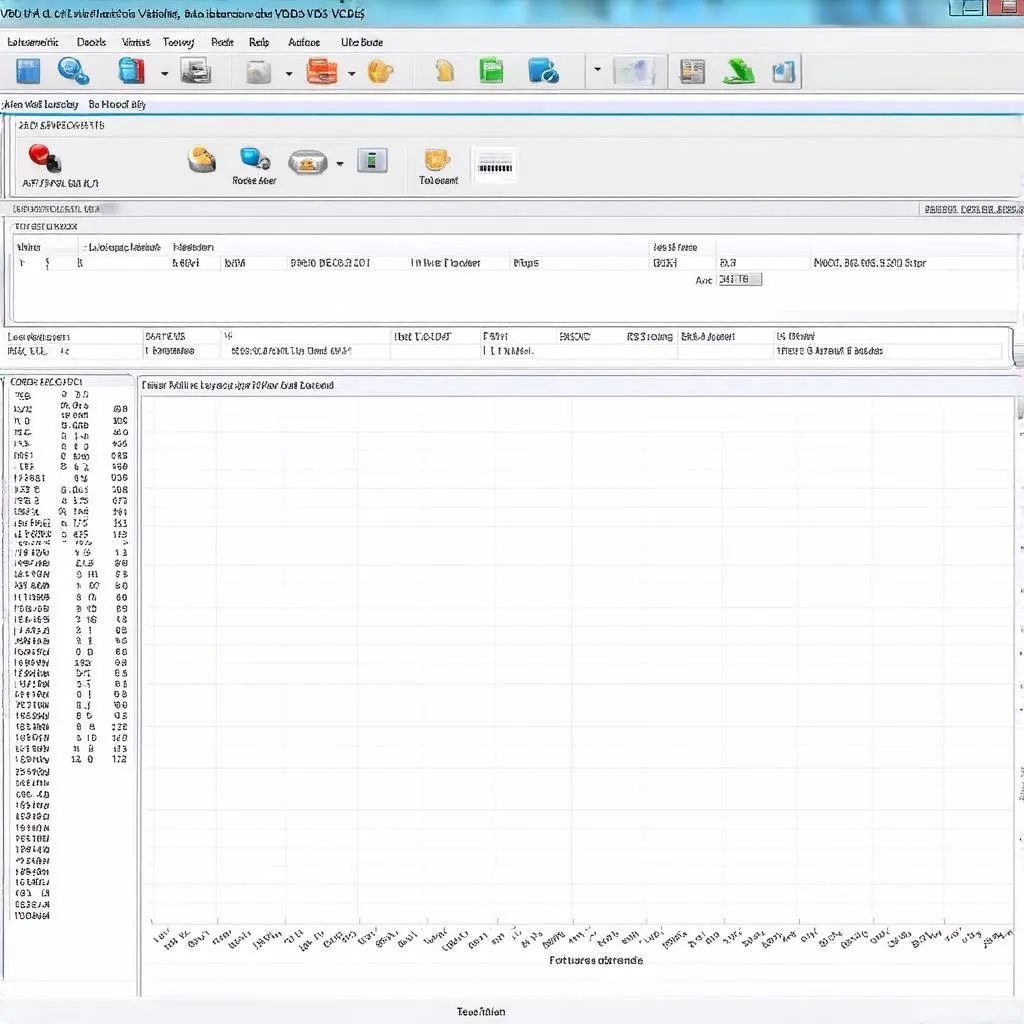The steering angle sensor plays a crucial role in your car’s Electronic Stability Program (ESP) and other advanced driver-assistance systems (ADAS). It constantly measures the angle of your steering wheel, providing critical data to the car’s control units. A faulty or miscalibrated steering angle sensor can lead to a range of issues, including an illuminated ESP light and malfunctioning ADAS features. This article delves into the world of the Vcds Steering Angle Sensor, explaining its function, common issues, and how to diagnose and address them using the VCDS software.
What is a VCDS Steering Angle Sensor?
The VCDS steering angle sensor is a rotary sensor located within the steering column. It precisely measures the angle of the steering wheel, relaying this information to the car’s various control modules via the CAN bus network. This data is crucial for the functioning of:
- Electronic Stability Program (ESP): The ESP system relies heavily on steering angle data to determine the driver’s intended direction and compare it to the vehicle’s actual trajectory. If a discrepancy is detected, the ESP system can selectively apply brakes and adjust engine power to help maintain control and prevent skidding.
- Power Steering Assist: In vehicles equipped with electric power steering, the steering angle sensor plays a crucial role in determining the appropriate level of power assistance.
- Adaptive Cruise Control (ACC): In vehicles with ACC, the steering angle sensor data helps determine the vehicle’s lane position and adjust speed accordingly.
- Lane Departure Warning (LDW) and Lane Keep Assist (LKA): These systems depend on accurate steering angle data to detect unintended lane departures and provide corrective steering inputs.
Common VCDS Steering Angle Sensor Issues
A malfunctioning or miscalibrated steering angle sensor can manifest in various ways, often triggering a dashboard warning light. Here are some common problems:
- Illuminated ESP Warning Light: This is a frequent indicator of a steering angle sensor problem.
- Erratic ESP Behavior: The ESP system may engage unexpectedly or fail to activate when needed.
- Inaccurate Steering Feel: Electric power steering may feel inconsistent or too heavy.
- Malfunctioning ADAS Features: Lane departure warnings, adaptive cruise control, and other ADAS features may become unreliable or unavailable.
Diagnosing Steering Angle Sensor Issues with VCDS
The VCDS (Vagueness Diagnostic System) software is a powerful tool for diagnosing and resolving issues with Volkswagen Group vehicles. It allows you to access and interact with the various control modules in your car, including the steering angle sensor. Here’s how you can use VCDS to diagnose steering angle sensor problems:
1. Connect VCDS to Your Vehicle: Connect your VCDS interface cable to your car’s OBD-II port and your computer.
2. Launch VCDS and Select Your Vehicle: Open the VCDS software on your computer and select the correct model and year of your vehicle.
3. Access the Steering Angle Sensor Module: Navigate to the control module responsible for the steering angle sensor. This module’s location may vary depending on your vehicle model, but it is typically found under “Chassis” or “Steering.”
4. Read Fault Codes: Once in the module, select “Fault Codes” to scan for any stored trouble codes related to the steering angle sensor. These codes will provide valuable clues about the specific nature of the problem.
5. Analyze Live Data: In addition to fault codes, VCDS allows you to view live data from the steering angle sensor. This can help you verify if the sensor is sending accurate information to the car’s control units. For instance, you can check if the steering angle reading changes smoothly as you rotate the steering wheel.
6. Perform Basic Settings/Calibration: In many cases, a simple calibration can resolve issues with the steering angle sensor. VCDS provides guided procedures for performing basic settings and calibrations for various modules, including the steering angle sensor. Follow the on-screen instructions carefully to calibrate the sensor correctly.
 VCDS Steering Angle Sensor Calibration
VCDS Steering Angle Sensor Calibration
7. Clear Fault Codes: After calibration or repair, clear any existing fault codes related to the steering angle sensor using VCDS.
Expert Insights
“A common misconception is that a new steering angle sensor will automatically function correctly. Calibration is crucial after installation,” says automotive electronics specialist, Dr. Emily Carter, author of “Modern Automotive Electronics Systems.”
FAQs about VCDS Steering Angle Sensor
Can I drive with a faulty steering angle sensor?
While your car might technically be drivable with a faulty steering angle sensor, it’s highly inadvisable. A malfunctioning sensor can lead to unpredictable ESP behavior, potentially compromising safety, especially during critical situations.
How much does it cost to replace a steering angle sensor?
The cost of replacing a steering angle sensor can vary based on the make and model of your vehicle. Generally, you can expect to pay between $150 to $400 for the sensor itself, plus labor costs for installation, which can range from $100 to $200.
Can I calibrate the steering angle sensor myself?
Yes, you can calibrate the steering angle sensor yourself using the VCDS software. However, it’s important to follow the instructions carefully and ensure you have the correct tools and equipment. If you’re uncomfortable performing this procedure, it’s always best to consult a qualified mechanic.
In Conclusion
The VCDS steering angle sensor is a vital component of your vehicle’s safety and driver assistance systems. Understanding its role and how to diagnose potential issues with VCDS can help you keep your car running smoothly and safely. Remember to always consult with a trusted mechanic if you’re unsure about any repair or diagnostic procedures.
 Car on Lift for Steering Angle Sensor Inspection
Car on Lift for Steering Angle Sensor Inspection
For more information on VCDS, compatible vehicles, and advanced diagnostic techniques, you can explore resources like our articles on downloading VCDS, choosing the right VW VCDS reader, or understanding the lane departure warning module on VCDS. Connect with CARDIAGTECH today to discover a range of professional-grade automotive diagnostic tools to keep your vehicle in peak condition.


